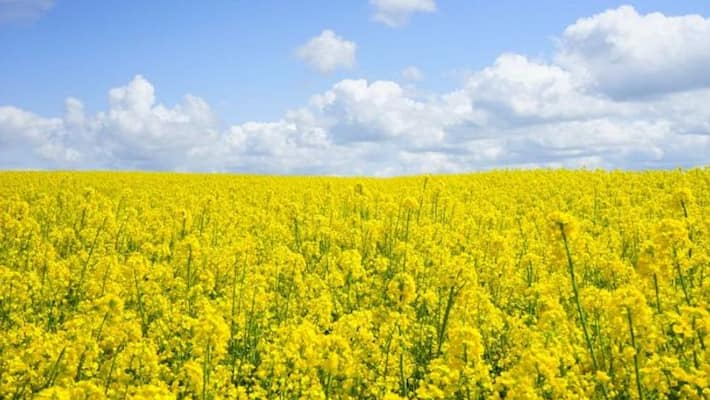DMH-11
1. Introduction:
- The Genetic Engineering Appraisal Committee (GEAC), India's apex regulator of genetically modified plants & food products, has approved the environmental release of DMH-11.
- Trials conducted over three years by the Indian Council of Agricultural Research (ICAR) suggest that DMH-11 has 28% higher yields than its parent Varuna & was 37% better than zonal checks/local varieties that are considered the best in different agro-climatic zones.
- Activist groups allege that GM mustard hasn't been evaluated as a herbicide-tolerant crop posing potential risks.
- They also allege that GM mustard plants may dissuade bees from pollinating the plant & this could have knock-off environmental catastrophes.

2.DMH-11:
- DMH-11 is a hybrid variant of mustard developed by researchers.
- It began with DMH-1, a hybrid variant that was developed without transgenic technology.
- DMH-1 was approved for commercial release in Northwest India in 2005-06, but this technology was not bankable enough to consistently produce hybrid mustard.
- India has several mustard varieties; it is a self-pollinating plant & is a challenge for plant-breeders to cross different mustard varieties & induce desirable traits.
- Being able to turn off this self-pollinating trait to enable such crossings & then restoring the trait, to enable seed production, is how the mustard plant's genes are to be manipulated.
- DMH-11 is a result of a cross between two varieties: Varuna & Early Heera-2.
- This cross was done after introducing genes from two soil bacterium called Barnase & Barnstar.
- Barnase in Varuna induces temporary sterility because of which it can't naturally self-pollinate.
- Barnstar in Heera blocks the effect of barnase allowing seeds to be produced.
- The result is DMH-11 that not only has a better yield but is also fertile.
- DMH-11 is a transgenic crop because it uses foreign genes from different species.
- 11 in DMH-11 refers to the number of generations after which desirable traits manifest.
3. Advantages:
- Trials conducted by ICAR for 3 years suggest that DMH-11 has 28% higher yields than its parent Varuna & was 37% better than zonal checks.
- These trials were conducted at 8 locations over three years.
- DMH-11 rather than being an end in itself signals the proof of the success of the barnase-barstar system that can act as a platform technology to develop newer hybrids.
- Having better hybrids is necessary to meet India's rising edible-oil import bill.
- Mustard is cultivated on 6-7million hectares during the Rabi winter season predominantly in Rajasthan, Haryana, Punjab, and Madhya Pradesh.
- India imports nearly 55-60% of its domestic edible-oil requirement.
- In 2020-21, around 13.3million tonnes of edible oil was imported at cost of ₹ 1,17,000 crore.
- This is primarily due to low productivity of about 1-1.3 tonnes/hectare that has been stagnant for over two decades.
4. Controversy:
- two main reasons made mustard for a debate.
- The use of genes that are foreign to the species is one & secondly the preparation of mustard hybrids requires the use of another gene called bar gene, which makes it tolerant to a herbicide called glufosinate-ammonium.
- Activist groups allege that the GM mustard wasn't evaluated as a herbicide-tolerant crop posing potential risks.
- GM mustard plants may dissuade bees from pollinating the plant & this could knock off environmental catastrophes.
| The only transgenic crop grown in India is Bt Cotton. |
5. Follow up:
The government or environment ministry has not officially supported GM mustard despite the GEAC approving it.
Bt Brinjal, the first transgenic food crop was cleared by the GEAC in 2009 but was put on hold by the then-UPA government because more tests were required.
The GEAC only allows DMH-11 to be grown in fields under the supervision of the ICAR.
The IARI said that the crop would be commercially available after 3seasons, now that they can be grown in large quantities for evaluation.




